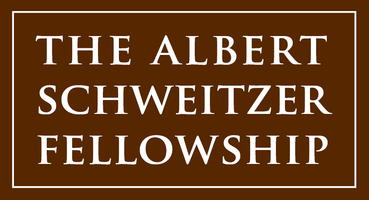Michelle Nguyen, MS4
Touro University College of Osteopathic Medicine, California
06.10.23
Sexual health education often evokes controversy among parents and educators, as misconceptions and differing opinions persist. Even for myself, However, it is crucial to debunk misunderstandings surrounding its content and the appropriate age to introduce it. Sexual health education encompasses more than just reproductive health, acknowledging that not all sexual acts serve solely reproductive purposes. Contrary to popular belief, its objective is not to teach children how to engage in sexual activities but rather to prioritize primary prevention of sexually transmitted infections (STIs), as recommended by CDC guidelines. Although the U.S. Department of Health has been advocating for sex education since 1940, there have continued to be controversy over the content and format and presently less than 50% of the states require information about contraception; even fewer require topics such as gender diversity or consent. We must continue to dispel the notion that sex education is Rated R material and instead recognize its vital role in empowering middle school-aged children for a healthier future. To gain firsthand experience and better understand the complexities surrounding sexual health education, I actively sought out an opportunity to teach sex ed to middle school children as part of an after-school program, acknowledging the controversy surrounding the topic. My experience dispelled any hesitance I had, and I strongly support implementing early sexual education in schools and other safe environments for children. By sharing my experience, I hope that I can convince others who are also wary of educating this age group to feel reassured in the necessity of early sexual health education.
Despite knowing the benefits, I was initially apprehensive about introducing sensitive topics they may not have known about since 12-year-old kids seem so young. With parental consent, we spent 6 weeks covering consent, communication, gender identity, reproductive anatomy, contraception, and risks of engaging in sexual activities such as infections and diseases. Rather than relying on a presentation, we made our sessions interactive and provided opportunities for participants to practice these skills. For example, we had students vote true or false on whether a vignette displayed proper consent or not. We also had students read scenarios and come up with ways on how the characters could have properly communicated their desires with each other. While some participants felt shy to thoroughly discuss some examples, starting off with true or false questions set the stage for a safe environment that allowed them only to participate however much they felt comfortable with. Although some studies find it difficult to confirm the positive benefits of sex education due to the unreliability of survey data and lack of statistically significant data, directly engaging with children and having the opportunity to witness their thoughts on this topic has only strengthened my conviction regarding the importance of supporting sexual health education.
An argument against early sex education concerns the perceived loss of a child’s innocence or conflicts with religious and cultural practices. However, the reality is that many children at this age are already aware of sex and harbor curiosity about where babies come from regardless of their upbringing due to influences from social media, friends, and the American entertainment industry. A qualitative study surveying the content themes of YouTube videos targeted for adolescents reports that sexuality is the most common theme. Although social media does include sexual education, content analysis of TikTok showed that the most common themes were female anatomy and sexual pleasure, leading to the conclusion that TikTok is an unreliable source of sexual health education. Knowing that children inevitably engage with social media and hear about these topics, it is even more important to address them in schools. Research supports the effectiveness of school-based programs focused on STD/HIV and pregnancy prevention, as they have been shown to decrease risky sexual behaviors among school-age youth including delaying first sexual intercourse and increasing the utilization of condoms and contraception methods. At the start of most classes, I would encounter eye rolls and hear kids groaning, “we already know this.” And I often received questions I would never have expected children to be curious about, such as the intricacies of in vitro fertilization using donor eggs. The number of advanced questions I received serves as evidence to me that children are aware of these topics and are constantly curious about them. Despite the challenges in assessing whether sexual education curricula improve sexual health outcomes in adolescents, studies have demonstrated that abstinence-only programs do not make a difference in postponing the initiation of intercourse or equipping children with the knowledge to engage in safe sexual behaviors. Thus, knowing that romance and sexual content are increasingly accessible online, it is safest to endeavor to provide proper education rather than avoid the topic.
While discussions on consent, gender identity, and anatomy went smoothly, I anticipated some rowdiness during our session on safer sex, which included a condom demonstration. As expected, there were giggles and students retreating in their chairs. However, what surprised me were the protests of “We already know how to do this.” Ironically, many of those who protested ended up accidentally breaking the condom during practice. It became clear that their confidence in their knowledge was misplaced. While acquiring these skills may not be immediately crucial, what is important is for children to understand that they may not have all the answers, and it is okay to seek guidance from a trusted adult when needed. Through these sessions, we provided a safe space for them to ask the questions they had been curious about all along.
Another question regarding sex education is whether children are neurodevelopmentally mature enough to make sound decisions. With the advent of social media, kids have access to unlimited information. However, what they may lack is a safe outlet to discuss what they are exposed to. During my sessions, the children consistently demonstrated an understanding of the fundamental principles of safety and scientific knowledge by asking insightful questions that confirmed their comprehension. For instance, they inquired, “So HIV is not curable, but can be treated?” and “Wait, so even if you have an infection, you might not display symptoms?” We educate children about the importance of their heart and how to enhance cardiovascular health from an early age, despite heart disease being more prevalent among adults. Normalizing discussions about sexual health is crucial to prevent the spread of misinformation among their peers. By doing so, we ensure that when they are ready to engage in sexual activity, they will be equipped with the knowledge to make safe choices.
Withholding sex education does not ensure the safety of children. If children are increasingly exposed to entertainment and social media, it becomes even more crucial to safeguard them against misinformation. Preserving their right to a controlled learning environment, where they can freely ask questions, guarantees that they acquire the knowledge necessary to protect themselves. The remarkable 12-year-olds I had the privilege of working with demonstrated their maturity in handling this information responsibly. I wholeheartedly urge cautious parents, educators, and policymakers to reconsider any reservations they may have and to invest in and support a comprehensive sexual health education curriculum that includes consent, communication, gender identities, contraception, and other safe sexual practices. This commitment is essential for the well-being and safety of our children.

